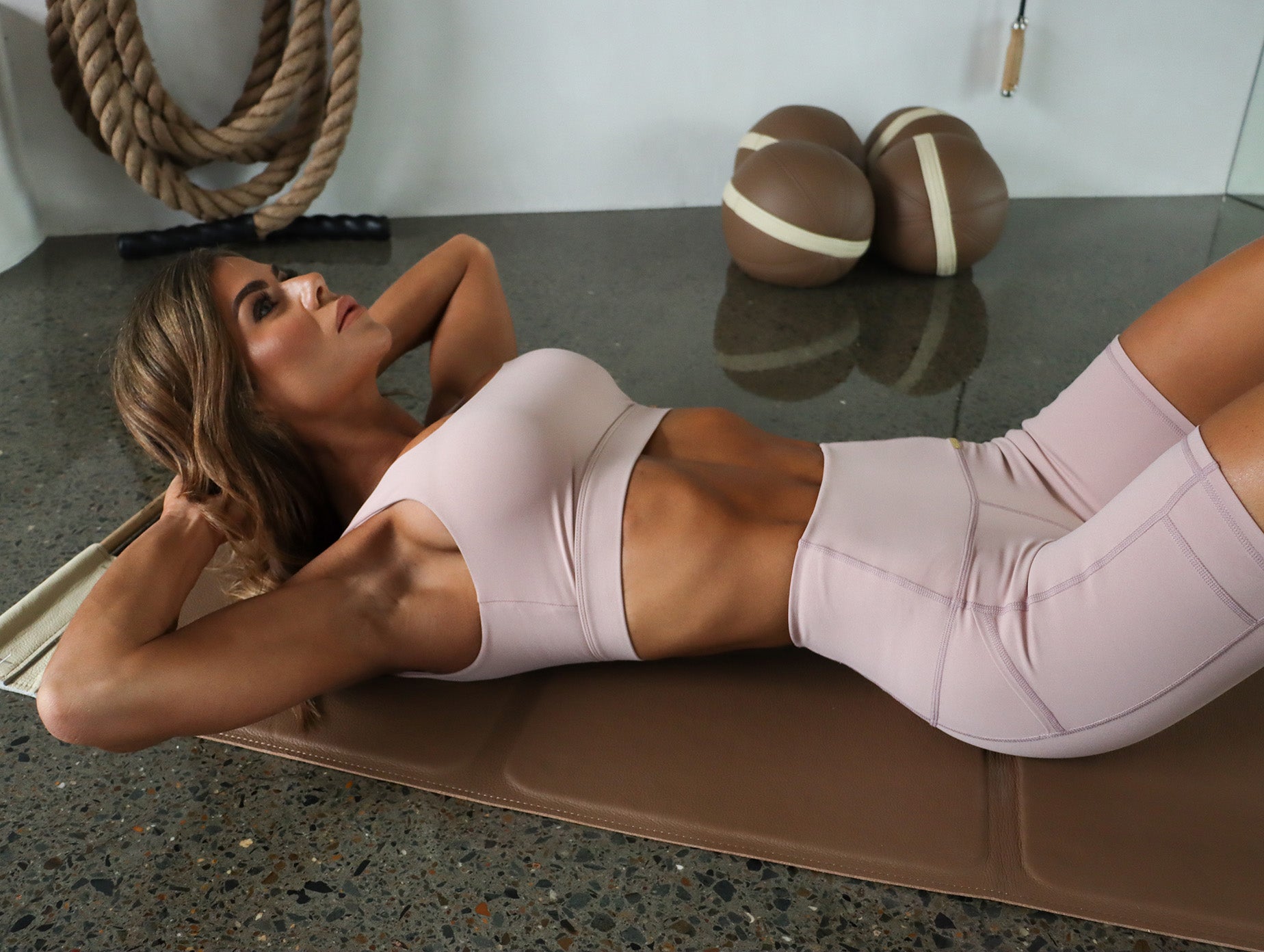If you need a low impact home exercise regimen that you can do anytime, anywhere, then look no further. We’ve taken the guesswork out of things by creating a quick low-impact workout that’s great for everyone.
What is low-impact?
Simply put, low-impact exercise is when at least one foot stays in contact with the ground - meaning no jumping or plyometric work. No jumping squats, no burpees, and no sprints necessary.
There are a number of reasons why you might need to opt for a low-impact workout, including pregnancy or pain and injury, but the truth is, low-impact exercises are beneficial for everyone. High impact can put a lot of stress on your joints and bones so opting for low-impact every once in a while can help reduce the risk of injuries. Low-impact exercises are less stressful on your body, but still get your heart rate up and work your muscles. They’re also a great option if you’re short on space, or don't want to wake up your neighbours or housemates!
Remember, it’s important to always warm-up before your workout, not only to get your muscles warmed up and prepared but to prevent any risk of injury. Try walking on the spot for five minutes to get the blood flowing and add in slow stretching movements.
These moves require only a set of dumbbells (or no equipment at all) and they’re sure to get your blood pumping. Try performing 15 reps of each exercise for 3-4 rounds.
Target Area: Upper Body
How To:
- Start with the dumbbells in each hand resting against your thighs by medially rotating your arms.
- Flex your elbow and curl the dumbbell up towards your shoulder. Supinate your palm (facing up) on the way up.
- Lower the dumbbell back to the starting position before alternating to the other arm.
Target Area: Full Body
How To:
- Start in a push-up position with your hands grasping a dumbbell.
- Keeping your elbow close to your body, bend your right elbow to pull the weight up toward the side of your body.
- Pause and hold for 2-3 seconds before controlling the dumbbell back down.
- Try not to rotate your hips out when you lift the dumbbell, only the elbow should move upwards making the dumbbell follow.
Target Area: Lower Body
How To:
- With your feet shoulder width apart and your arms close to the body, squat down halfway, exploding back up as high as possible.
- Fully extend your entire body, spreading your legs and arms away from the body (like a star).
- As you land, bring your arms and legs back into line with your body, allowing your legs to take the impact.
Target Area: Lower Body
How To:
- Begin with the dumbbells in front of your body with a slight bend in your knees. Ensure you maintain an upright and tall posture by positioning your shoulder blades backwards and downwards. Engage your glutes to stabilise your hips.
- Hinge at your hips, allowing your waist to travel behind your heels and your upper body to travel over your toes. Slowly lower the weight until you feel a stretch through your hamstrings. Ensure you sit back on your hips.
- Raise the dumbbells vertically upwards by pulling them to your hips. Ensure you maintain tightness through your torso and lock your hips at the top of the movement.
Target Area: Lower Body
How To:
- Lying on your side with straight legs, place the THE BOD Booty Band around your ankles. Place one hand on the floor in front of your chest and use the other hand to support your head.
- Start with your ankles together. Activate your core and elevate the top leg until it is at approximately 45 degrees with your torso.
- Slowly bring your leg down to the starting position ensuring there is constant tension within the band. Perform on one side before lying on the alternate side and exercising the alternate leg.
Target Area: Core
How To:
- Start in a push-up position with your arms fully extended and body in a straight line. This will be your starting position.
- Quickly bring one hand up to tap the opposite shoulder before placing the hand back on the floor and repeating on the opposite side.
As always, listen to your body. If you feel any discomfort or pain, stop immediately. You can adjust the workout or modify any of the exercises based on your fitness level or individual circumstances. If the routine feels easy, try repeating the workout again, or add a slightly heavier dumbbell weight.
If you want to try something different, then fear not. There are plenty of low-impact cardio or strength training options out there, including swimming, cycling, rowing, or TRX exercises.





Leave a comment